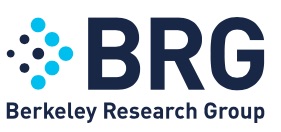16 April 2021
If you are a disputes lawyer working on boxes and boxes of documents and don’t live in a mansion, you need to consider using digital disclosure. BRG’s Chris Lim explains more.
In my last post, I described how the COVID-19 pandemic has made digital disclosure and document review a necessity for anyone involved in complex litigation or arbitration. Today, I will explain exactly what you get when you take the plunge and start reviewing documents on a … screen.
Download “Digital Disclosure 101: All You Need to Know.”
Accessible on a laptop, tablet or phone (although best to go for one with a big screen), the platform is supported on all devices. You just log in and go.
After you log in, you will see a range of folders that you can access. They are your virtual bank boxes, containing the indexed documents.
At the bottom of the screen, you’ll see a dashboard that you will use to access the index and your palette of tools.
And that’s pretty much it. Click though, find the docs you want, read them.
Can you mark them up? Absolutely. You can have your coloured Post-it notes, sticky bookmarks, highlights and text notes. You can even scribble on the pages with your Apple Pencil.
And collaborate? Yep. All notetaking is updated in real time across the documents. So you can divide and conquer and see what your team members are writing. You can also write private notes to yourself that aren’t shared.
Digital disclosure is nothing new. We’ve been able to scan, upload and allow secure access to docs for years. The functionality has improved over time, starting with perfecting searching content. Now the clunk is gone. Notetaking and collaboration just work.
We could leave it there. Everything you can do in the document room also can be done on screen, and the team can work together from multiple locations. During a pandemic, it normalises workflow. And that’s great.
But if you’re still with me, let’s get a little technical.
Artificial intelligence (AI) has come a long way in recent years. And our digital disclosure platform is full of really useful—some might say amazing—tools that can make your life easier.
I’m not going to go through all of them. There are too many, and the list gets longer by the day. So here are just a few.
Let’s start simple: email threading. Most people feel their hearts sink when given a box of nonchronological emails to review, full of duplicated threads and multiple addresses. It’s just not how we view emails.
The email threading view on our eDiscovery platform allows you to go through the emails with duplications stripped out, the timeline clearly shown and participants highlighted. It’s a great improvement and makes email review efficient.
Next: multi-language translation. This comes as standard. There is no longer a need to risk security by cutting and pasting content into your browser.
Getting techier, we have contextual analysis. You’ll do a lot of word searching as you navigate the docs. AI can predict what you’re searching because it has “read” all of the documents. It might point out that the word “fraud” or “price” or “accident” is used disproportionately in connection with a company name you are searching. This could be useful.
I’ll give you one more: sentiment analysis. The system will analyse the mood of the authors of the documents based on their use of language. Therefore, AI can tell you that Jane Doe, who is usually of a friendly disposition, sent a particularly angry email on the 27th. Or that John Smith, who usually cares little about rigour or his writing, chose his words very carefully in a range of documents.
Last, the latest and greatest in eDiscovery: machine learning. As you review documents and mark them as relevant/not relevant, the system will understand your decisions and suggest further relevant documents for you to review. This isn’t automatically evidence, and much of it relies upon the rigor of the reviewer. It means that if you are effective at trawling though documents, the machine learning will enhance this effectiveness.
As I said before, I have many tools that I can set up. We customise the platform to make sure you have everything you need in the most useful and efficient way.
If you want to find out more, call +65 8721 9904 or email brgapactech@thinkbrg.com. We will give you a demo and show you just how good the functionality is.
Paper is never going to go away completely. But pandemic or no pandemic, digital disclosure isn’t going away any time soon either.


.jpg)




